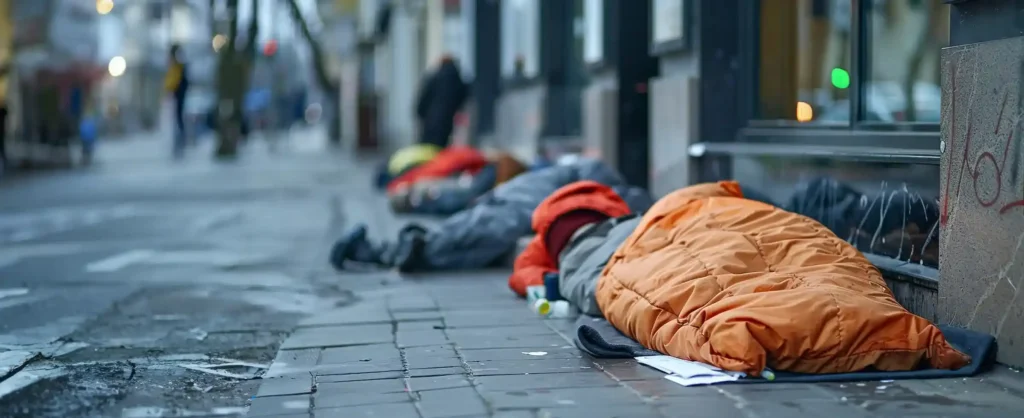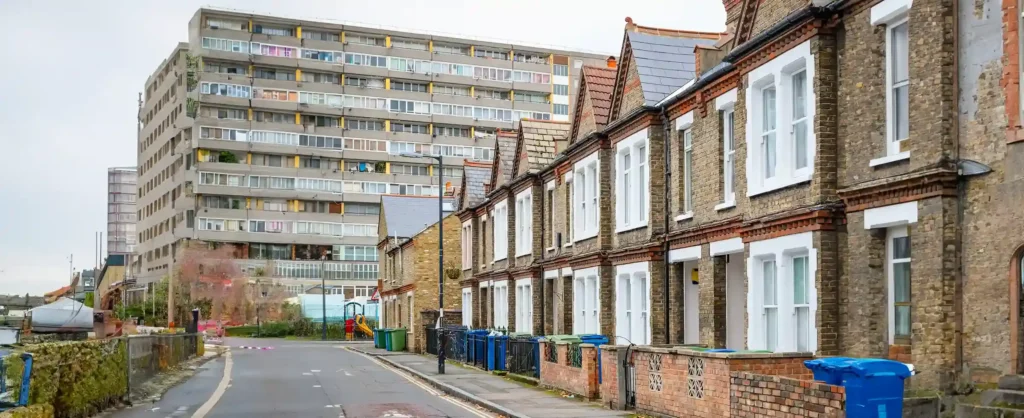UPDATE (23/07/24): It has been a year since Prince William’s Homewards project was launched. So far, the project has built inroads between the public, private and third sectors, helping to develop bespoke solutions to homelessness in several UK towns. In its second year, Homewards will see each of its six premier locations publish detailed action plans for tackling homelessness that may be replicable throughout the UK. With the announcement that the first year of the Homewards initiative will soon be the subject of a documentary airing this autumn, the practical results of Prince Williams’ plan will soon be made public knowledge. I hope to report back with a more extensive update once it is.
No one can argue that Prince William’s commitment to making homelessness a thing of the past is admirable and well-intentioned, but the reality of Homewards – the Prince of Wales’s recently launched anti-homelessness campaign – is that it’s rooted in a privileged and disconnected mentality that casts doubt on any notion that it could have a real social impact on the recent uptick in homelessness and rough sleeping gripping the nation.
I’d be the first to admit that I’m not as politically savvy as I’d like to be, but I know vulnerable people and housing. I have had years of experience working with both in my role as Concept Capital Group’s Principal Broker and in my personal life. That’s why I can confidently say that Prince William’s outlined plans to tackle homelessness are too heavily focused on addressing the symptoms of homelessness and not nearly concerned enough about the underlying social and economic trends that create hostile environments that drive certain vulnerable groups into rough sleeping.
What is Homewards and How Will Prince William Reduce Homelessness?
Launched by Prince William and the Royal Foundation in June this year, Homewards is a five-year locally-led government programme dedicated to developing a transformative and permanent solution to homelessness.
Through collaboration with leading anti-homelessness charities such as Shelter, Crisis and the Big Issue Group, Homewards takes a unique locally-led approach that uses coalitions of people, organisations and businesses to create tailored solutions to homelessness.
With access to leading expertise on homelessness, Prince William’s public image as a member of the royal family and up to £3 million in funding, Homewards is currently being rolled out in six flagship locations throughout the UK with a scope to eventually expand its influence to the rest of the UK and beyond as and when it proves to be an effective approach to eliminating homelessness as a social epidemic.
According to a press release by Homewards and The Royal Foundation, the campaign aims to address homelessness by:
- Providing access to a network of expertise, partners and funding sources at a local and national level to unlock new ideas and further investment opportunities
- Providing up to £500,000 of flexible seed funding to each of its six flagship locations to support the delivery of anti-homelessness action plans
- Appointing local leads to support the implementation of action plans, spot new opportunities and establish coalitions with other anti-homelessness organisations
- Working with an independent research partner to support capacity building, evaluation and information sharing throughout the program
- Developing a focus on affordable social housing development, with each flagship location receiving support in delivering innovative housing projects
Results and findings gathered from each location throughout the five-year plan will be tested and adopted by other areas in the UK and internationally, allowing for more comprehensive solutions to homelessness to be explored.
Three Things That Work About Prince William’s Homewards Campaign
Firstly, it would be wrong of me to criticise the Prince’s anti-homelessness campaign without first discussing where it succeeds. There are a lot of things that Homewards does right that other approaches to tackling homelessness have fallen short of in the past. For example:
1. It Collaborates with the Private Sector
Commercial partnerships are always a good indicator of a charity’s ability and willingness to deliver because, despite strong efforts from the government in meeting certain targets, they often lack the resources and funding to do so.
By partnering with private sector actors, charities can better take advantage of their existing infrastructures and supply chains to better deliver and scale their services to meet their objectives.
2. It Takes a Local Approach to Homelessness
One of the recent criticisms of anti-homelessness efforts by the government was outlined in a recently released report by a team of researchers from the Universities of Kent and Southampton titled ‘Homelessness in the Countryside: A Hidden Crisis’.
The report is the result of a lengthy survey into an ongoing homelessness crisis in rural England and concluded that there is a degree of oversight and ignorance when it comes to addressing – or even acknowledging – rural homelessness:
“Rural homelessness is a real and growing problem that requires specific, locally informed and properly funded policy interventions. Without active interventions and good preventive services, rural homelessness will keep increasing. […]
Rural poverty exacerbated by high housing costs is a fundamental driver of rural homelessness. Severe restrictions in local authority funding since 2009 intensify risk. Rural areas receive 65% less funding per capita than urban for homelessness prevention who themselves are severely underfunded.”
This inability to identify the specific causes and drivers for rural homelessness is emblematic of a more widespread problem with traditional anti-homelessness initiatives and their capacity for addressing less obvious “hidden homelessness”.
By taking a local approach to tackling homelessness, Prince William’s plans for Homewards show much more potential to successfully identify the unique demands of each of its six flagship regions and allocate equal funding based on specific needs.
3. It Focuses on Housing Development
The fact that homes are the supposed focus of Prince William’s efforts should be a relief to everyone, especially considering the impact the current mortgage crisis has had on housing affordability and availability this year.
Renters throughout the UK have been heavily impacted by record-high monthly rent costs, with rents growing faster than average earnings over the 21 months leading to June 2023 according to research by Zoopla. The same research also revealed that the average rental inflation for new lets has risen by 10.4% year-on-year, with rent taking up 28% of the average tenant’s earnings – the highest proportion in a decade.
For those on housing benefits especially, these recent rental price hikes are deeply concerning. An April 2020 housing benefit rate freeze sparked by the COVID-19 pandemic compounded by rent hikes has led to the number of homes on the housing market that are affordable on housing benefits plummeting from 23% to 5%. This has left some of the nation’s most vulnerable individuals and families far more exposed to the threat of homelessness and rough sleeping than they might have been pre-COVID.
All in all, affordable housing is arguably in greater demand than ever, and an anti-homelessness plan led by housing development is a promising new twist on existing government commitments to new homes.
Three Ways Prince William’s Homewards Plan Can Be Improved
Unfortunately for the nation’s rough sleepers and charity organisations, homelessness is never an open and shut case. If Prince William really wants to stamp it out to the point where It almost becomes a non-entity, there are a few improvements he could make to Homewards’ existing goals to more effectively address the root causes of homelessness.
1. Increased Focus on Improving Mental and Physical Health Services
One key way in which Homewards can more effectively combat homelessness is through increased funding towards and focus on improving mental and physical health services available to the homeless and vulnerable people in general.
As much as mental health awareness is arguably at an all-time high, there are still many aspects of it that are overlooked when dealing with the homeless – a tragic fact considering how much of a role poor mental health can play in homelessness and how much homelessness can worsen existing mental health issues.
According to the Salvation Army, the deaths of homeless people from drug poisoning recently jumped up by 112% since 2013 while funding for addiction services has simultaneously fallen by 12%. More generally, funding for mental health services has plummeted by 27% across the country while available figures on the number of homeless people diagnosed with mental health problems has increased by 19% since 2018. This suggests that the nation’s mental health infrastructure is not only severely underfunded but also lacks the tools to properly improve the lives of homeless people in its current state.
Similarly, an article by Sky News evidenced a drastic increase in the number of homeless people being admitted to hospitals in the past four years, representing 78,000 hospital visits a year in 2022, or approximately one every seven minutes. And, while hospital admissions among the general population fell by 4% in 2022, they rose by 60% for the homeless.
What Can Be Done About Health Services?
For Prince William, these numbers should be more than just an unsettling truth: they should be a strong indicator of where his future efforts should be directed to ensure his five-year plan has a meaningful social impact on homelessness. Pop-up clinics focused on providing free, accessible medical and mental health services, for example, could be a way to proactively reach out to the homeless community and encourage those struggling with mental health to take preventative measures before it brings the threat of homelessness into their lives.
2. A Nationwide Commitment to Identifying Hidden Homelessness
As promising as Prince William’s promise to take a local approach to ending homelessness is, even local coalitions that are more familiar with the obstacles facing their region’s homeless might find themselves hard-pressed to navigate the complicated problem of hidden homelessness.
The Office of National Statistics (ONS) has loosely defined hidden homelessness as one or more of the following:
- Temporarily living with another person unofficially – or ‘sofa surfing’
- Living in overcrowded or unsafe conditions
- Living in out-of-season holiday lets
- Living in poor-quality caravans in rural areas
- Having no right or an inability to stay in a fixed place
- Rough sleeping without receiving formal assistance from a local authority or related support services
- Not having formally applied for support from a local authority
- Lacking the resources to avoid or escape their current situation
According to ONS research, the average number of homeless accommodation types experienced by participants in a homelessness survey was 3.5 over a year and more than half of all respondents had been homeless for over three years across their lifetime, suggesting that many homeless people could have qualified as hidden homeless at some point. What’s more is that hidden homeless is believed to affect more women and young people than open homelessness, adding an extra dimension of vulnerability to the issue.
What Can Be Done About Hidden Homelessness?
If Prince William and his team are to truly route out homelessness as a social epidemic, it will require them to commit to their promise to conduct extensive research into the results of Homewards in its flagship areas and use those results to develop a more thorough understanding of how hidden homelessness manifests.
Findings from the previously mentioned ‘Homelessness in the Countryside: A Hidden Crisis’ report also showed that 81% of surveyed respondents believed that rough sleeping is experienced differently in rural areas than in urban areas, with 80% believing the main obstacle in addressing homelessness in their area is structural and 29% arguing that a lack of affordable housing and emergency accommodation specifically is to blame.
If members of the hidden homeless are going to be encouraged to step into the light, Prince William’s Homewards initiative will need to rectify the mistakes of previous anti-homelessness charities and reassure them that they possess both the resources and infrastructure to provide them with welfare and security.
This could prove easier said than done considering how much homelessness is stigmatised even today, with the heavily criticised and outdated Vagrancy Act 1824 only recently coming under review.
3. A Willingness to Invest in Alternative Social Housing
Earlier this year, homelessness charity Shelter reported a net loss of 14,000 social homes in England last year, with 21,600 being sold into the private sector or demolished and only 7,500 built. As a result of over 165,000 social homes being lost between 2012 and 2022, as many as 1.2 million households are currently on a waiting list to receive a social home.
An additional Shelter article also revealed that 1 in 208 English residents are currently without a home, with 2,400 rough sleepers on any given night and nearly 250,000 living in temporary accommodation.
These numbers embody a core failing of affordable and social housing in its inability to properly meet the demand of the vulnerable people who need them. With over 278,000 households assessed as being at risk of or already homeless between 2021 and 2022, it’s extremely important to build safe, affordable social housing as quickly as possible.
What Can Be Done About Alternative Social Housing Investment?
Alternative methods of property development provide an opportunity for overburdened welfare systems to produce a greater number of high-quality homes on a smaller budget and a much shorter timescale. According to a 2019 market report by McKinsey & Company, Prince William and the other leading figures in Homewards could use modular construction to maintain their focus on homes while:
- Realising a saving in construction costs of over 20%
- Reducing long-term energy and maintenance costs
- Speeding construction time by as much as 50%
This makes it an ideal solution for creating a significant safety net for the nation’s homeless population within the initiative’s five-year timeframe for meeting its objectives.
How Does Concept Capital Group Fight Homelessness?
At Concept Capital Group, we exclusively build and place homes for the benefit of vulnerable people, including the homeless and rough sleepers. When you invest in one of our modular properties, you are supplying a new one or two-bedroom home for an individual or family that sorely needs it. As modern high-quality properties that meet the British Standards Institution’s BS3632 specifications for long-term residential living the entire year round, each of our modular homes comes with:
- A fully-equipped kitchen with EPC A-rated appliances
- A fully-equipped bathroom
- Double-glazed windows for heat retention and energy efficiency
- Gas central heating
- Energy-efficient LED lighting throughout
- Extensive wall, flooring, and roof insulation
- An Adam Abbey fireplace in stone
- A range of customizable options for tenants to personalise
With our property investment opportunity, you can rest easy knowing that you will not only receive an assured monthly rental payment of £358.33 but also contribute to our ongoing effort to change the trajectory of affordable homes by providing pre-approved vulnerable tenants with simple, secure social housing.
Want to get involved? You can book a call with our team today.
We’ll give you everything you need to get started on making an impact on homelessness and rough sleeping while giving your portfolio a hassle-free boost.













